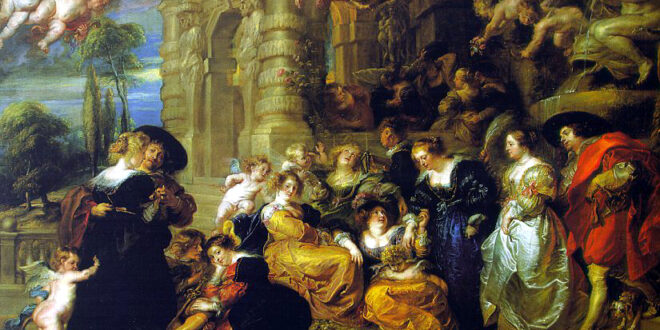Painting has always been one of the most important and significant forms of art. There are tons of different artistic styles and branches that are popular these days, such as digital art and many others, but nothing replaces traditional brush painting as the purest form of expression.
As far as we all know, there were many different periods and styles through which painting changed and evolved over the past centuries, and one of the most significant and memorable ones is the Rococo period. In this article, we are going to talk about the beginnings of the Rococo style, how it changed art for the better, and what are some of the most remarkable things that came out from this epoch.
The movement and its signature stamps

For those of you that are not familiar with the origins of this movement, it is said that the Rococo period emerged in France somewhere in the late 17th and early 18th century, but then it managed to spread throughout the entire world. Many people confuse this with the Baroque, but they are quite different, and here’s why.
Baroque focuses on symmetry, while the Rococo style completely abandons it and focuses on making asymmetric things instead. Buildings constructed during the period of this movement will always have asymmetric elements, so they are quite easily recognizable. If you ever need to spot one, just try to look for ornaments infused with flowers and recognizable C-Lines.
Another signature sign of Rococo is the wide use of flowers in furniture and paintings. Whenever you see something painted in this period, you’ll immediately notice the huge amount of flowers on the picture, and the same thing goes for the ornaments. A mirror frame, a table, or a chair from this movement will always have a flower theme.
The Rococo Paintings
If you want a concrete answer about what marks this period when it comes to painting and art, it’s the soft and curvy asymmetrical lines, accompanied by the love of nature and flowers on almost every picture. The term “Rococo” comes from the word “Rocaille”, which means rubble or “a rock”.
The theme of the paintings made during this period is usually something bright, such as the description of youth, entertainment and positive things in general. The flowers and natural elements, however, will always remain the most remarkable part of this period. If you are interested in viewing a few examples of the Rococo paintings, feel free to click here.
Famous artworks of this period
There isn’t a better way to help you remember the characteristics of this movement than by showing you some of the most significant artworks that marked this style as something great. Let’s take a look.
Pilgrimage to Cythera by Jean-Antoine Watteau
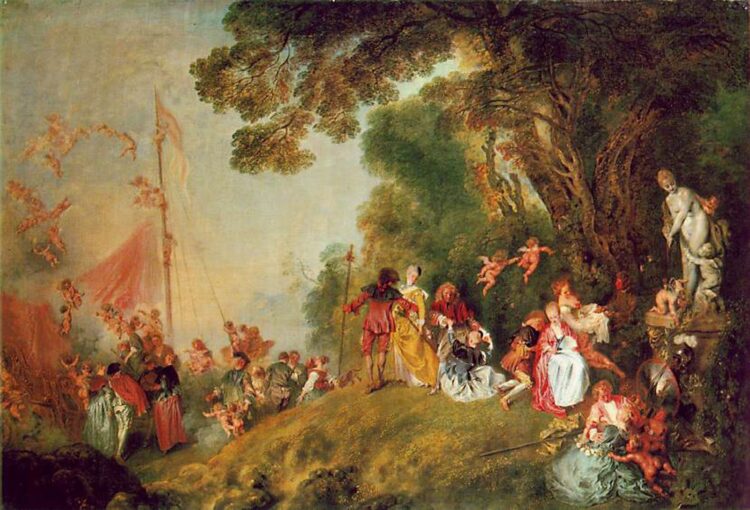
Jean-Antoine is credited as one of the artists that gave birth to the Rococo painting style. When you take a look at this beautiful artwork created by him in 1717, you’ll immediately notice the amounts of nature, flowers, and trees that he used as the base of the painting. The theme of this artwork is bright, and it features people, mostly couples, that are on their way to find the so-called “spiritual enhancement” on the island of Cythera.
There are many theories about what kind of a message Jean-Antoine wanted to share with this artwork, but we’re not going to go very in-depth about that, simply because we are here to take a look at the remarkable elements of the painting itself, not to uncover its meaning.
Triumph of Venus – Francois Boucher
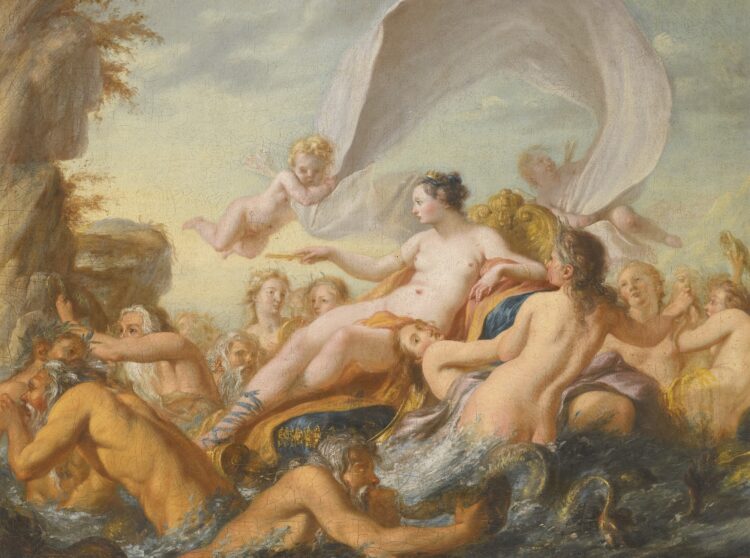
This painting was done by Francois Boucher back in 1740, and it features a slightly erotic scene but in a very playful sense, again accompanied and complemented by all of the staples of the Rococo period, which is natural and bright colors. This artwork achieved huge fame later on, and you can find it today in many different forms, painted on mugs or modeled into porcelain figurines.
It is believed that when he was young, Boucher was influenced by the art of Jean-Antoine Watteau, but whether this is true or not, we are not sure yet.
The Meeting – Jean-Honore Fragonard
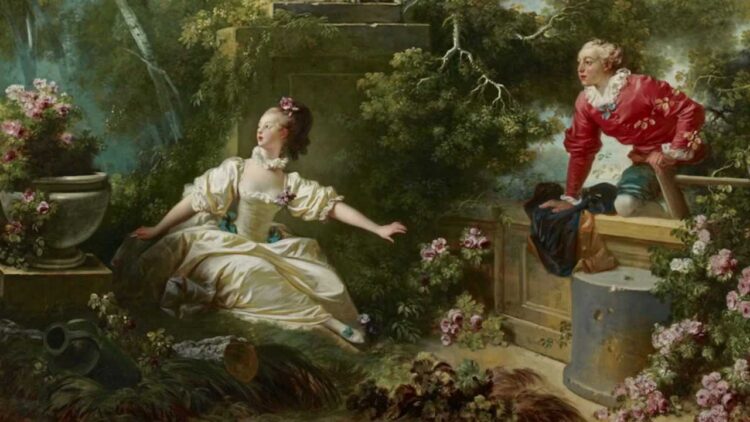
One of the best examples of the Rococo painting style. This picture was made back in 1772 by Jean-Honore Fragonard, and as soon as you look at it, you immediately notice the over-use of natural elements, gigantic trees and green color in general. It is said that Fragonard once worked in Boucher’s studio and that his style is influenced by the Italian Baroque and the Dutch paintings which often feature landscapes.
The Swing – Jean-Honore Fragonard
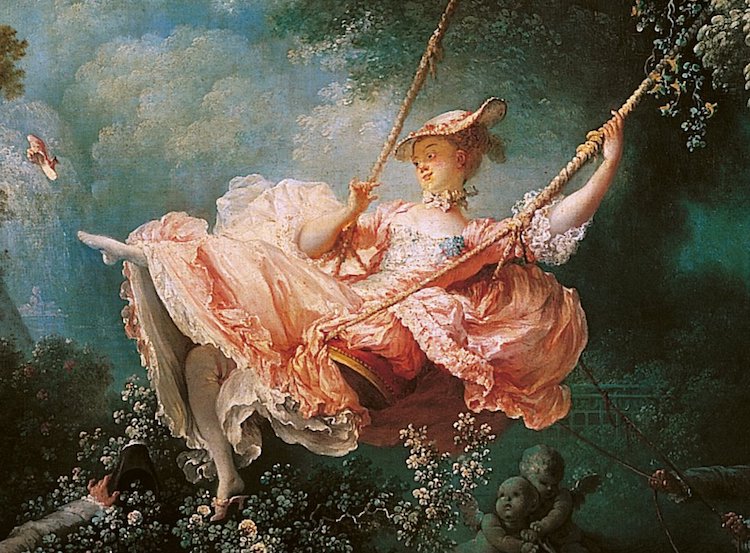
Probably the most famous artwork of this period, “The Swing” is a painting in which we can see a couple having fun in a very overgrown forest. The female on the picture is swinging on something that looks like a swing made out of vines, hanging from the tree itself, and the male is just resting below, leaned over a statue that is also overgrown, with a bunch of flowers all around them. The painting was done back in 1768, and it became one of the most iconic deeds of the entire period.
It is just impressive how an artist can go so in-detail and make every branch or leave seem so realistic, but that’s just one of the reasons why this painting remains so popular even today.
Conclusion
The Rococo period is quite different than the Baroque, even though many people often confuse them for the same thing. Unlike the Baroque, here we have many asymmetries and a huge accent on nature and flowers, both in the paintings and the house ornaments, furniture, architecture and even some jewelry. The most iconic paintings of this period are The Swing by Jean-Honore Fragonard, The Triumph of Venus by Francois Boucher and The Pilgrimage to Cythera by Jean-Antoine Watteau.
If you want to spot a building that was constructed during this period, search for asymmetries in the windows, the position of doors and look for any ornaments that seem to have a lot of carvings that look like flowers and trees. For paintings, the overuse of natural elements and trees of unreal sizes are what’s going to help you recognize an artwork from this movement.
 Hi Boox Popular Magazine 2024
Hi Boox Popular Magazine 2024
